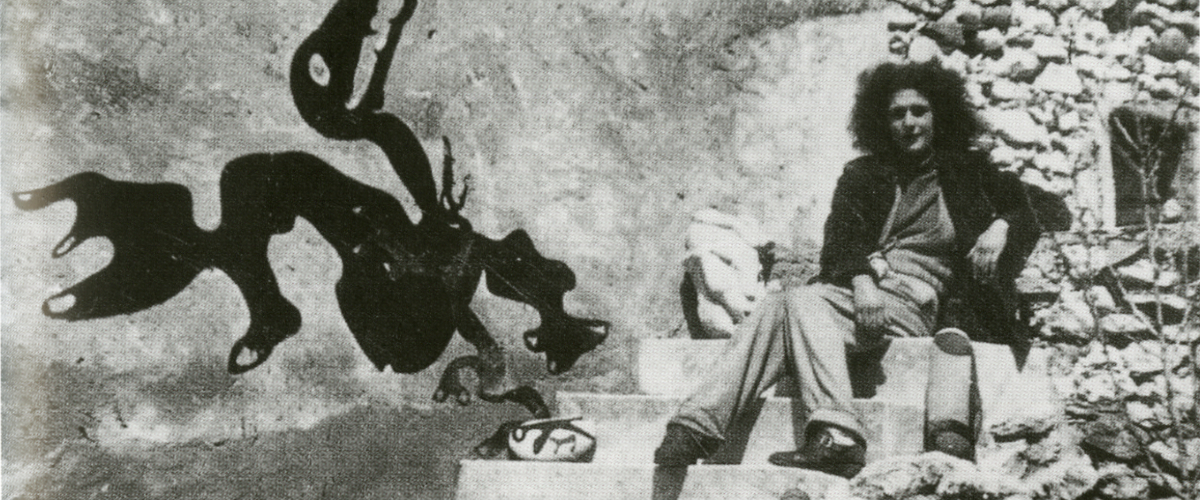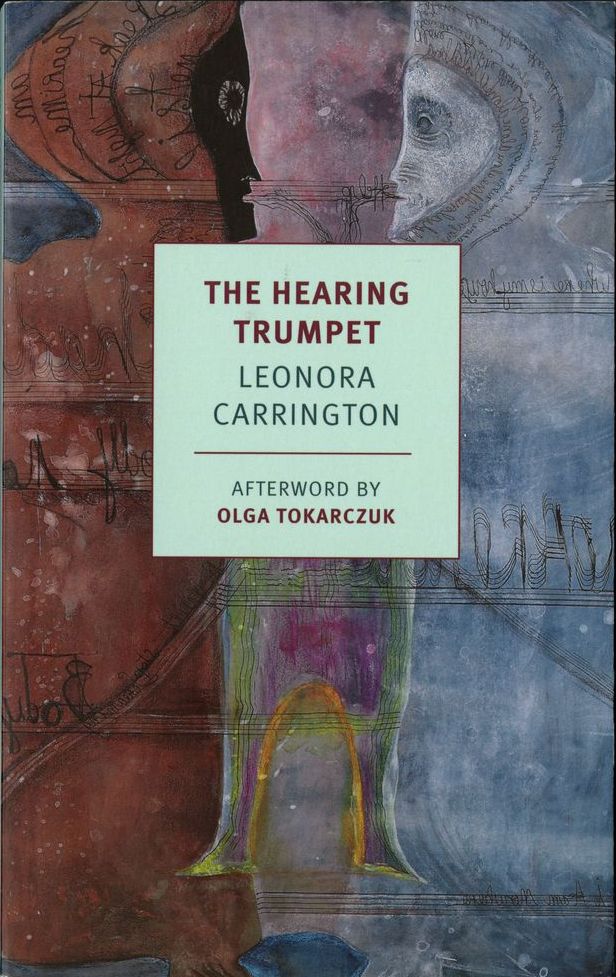leonora carrington: writer, painter, visionary
An up-close look at the life of the acclaimed surrealist Leonora Carrington (1917-2011), Leonora Carrington: Writer, Painter, Visionary explores publications from the holdings of the Dalí Museum Library & Archives, situating them in the context of her remarkable career. Featuring a suite of etchings made at Graphicstudio, Tampa in 1995, this graphic presentation offers a unique glimpse into Carrington’s artful exploration of text over the course of her long career.
1. About leonora carrington
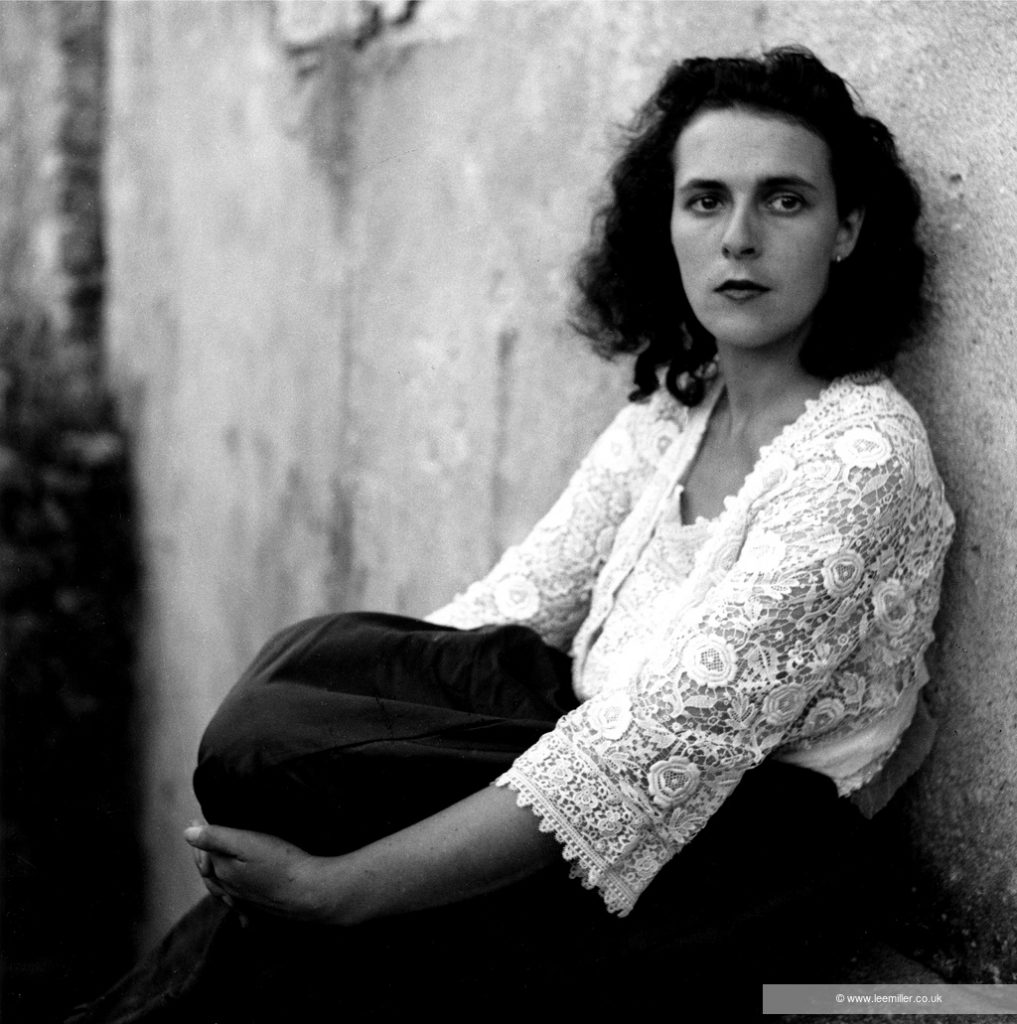
St Martin d’Ardèche, France 1939
© Lee Miller Archives, England 2023.
All rights reserved. Leemiller.co.uk
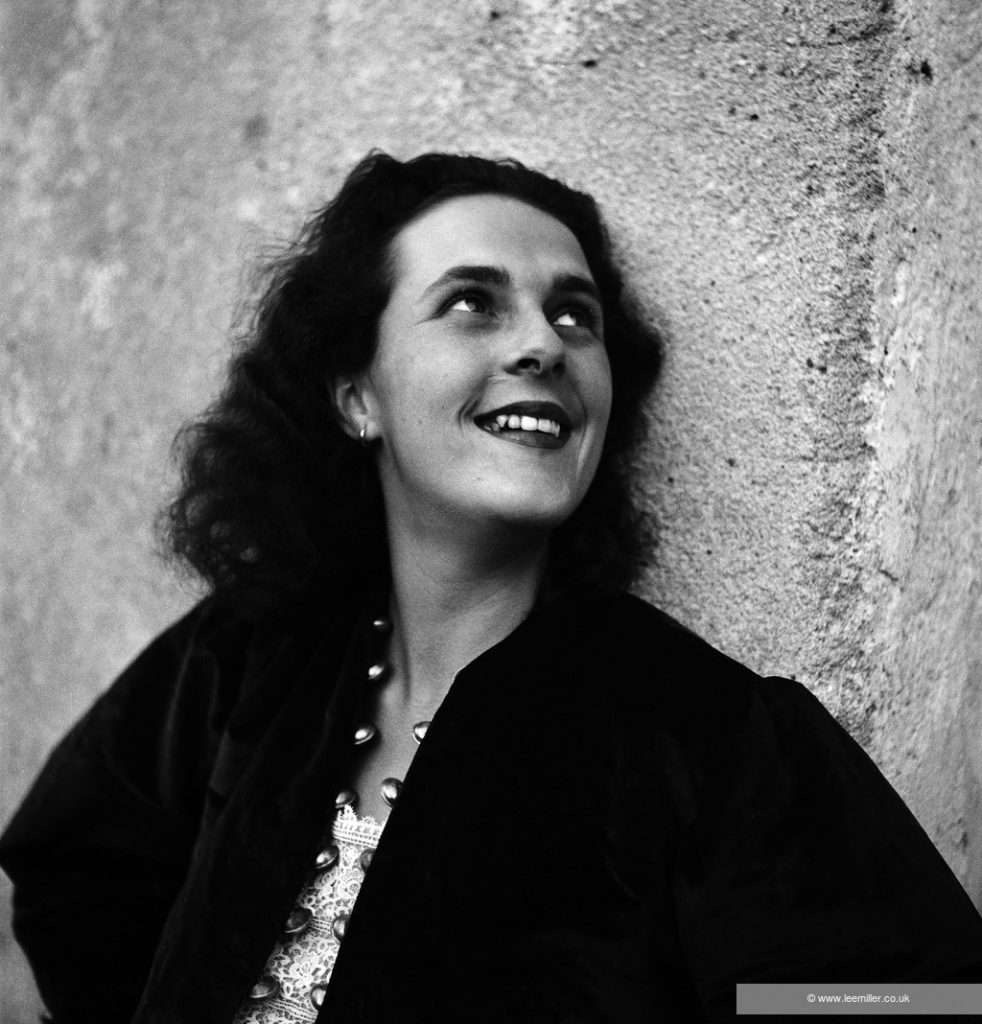
Leonora Carrington was born in 1917 in Lancashire, England. She grew up in a strict, aristocratic family, her industrialist father owning a series of successful textile mills. A rebellious child, she bristled at her privileged yet strict upbringing, getting herself expelled from two Catholic schools. She found escape through horseback riding, and the stories of Celtic mythology her mother and nanny shared with her, creating imagined bestiaries in her notebooks.
As a teen, she thrived studying art in Florence and in Britain under the French modernist Amédée Ozenfant. Her favorite artists were Hieronymus Bosch, Paolo Uccello and Antonio Pisanello. In 1935, at age 18, she was distressed when her father arranged for her to be presented as a debutante at Buckingham Palace. Infuriated by the event’s implications, she vowed never to allow such an event determine her future. It inspired her best-known short story, “The Debutant” (1937), a masterpiece of black humor.
Leonora Carrington was a prolific painter, completing over 2,000 works during her lifetime. She is celebrated for her mystical, fantastical and dark work, populated by bird and animal hybrids. While she did not see herself as a “surrealist,” Surrealism informed her creation of artwork shrouded in dreams.
As a student, she studied art in France. She continued with classes in the Chelsea School of Art in London and then Amédée Ozenfant’s new Academy of Fine Arts. She responded strongly to such artists as 15th-century Netherlandish painter Hieronymus Bosch and Italian Renaissance painter Paolo Uccello. Her ideas about art were transformed when her mother gave her a copy of Herbert Read’s book on Surrealism, where she discovered Max Ernst’s Two Children Menaced by a Nightingale.
Her work is characterized by occult-like and ritualistic gatherings of figures involved in mysterious activities and ceremonies associated with transformation. Many of her characters are animals, and magic animates the settings. Her mythical figures are derived in part from Celtic stories and folklore that her nanny and mother shared with her as a child.
2. surrealism and madness
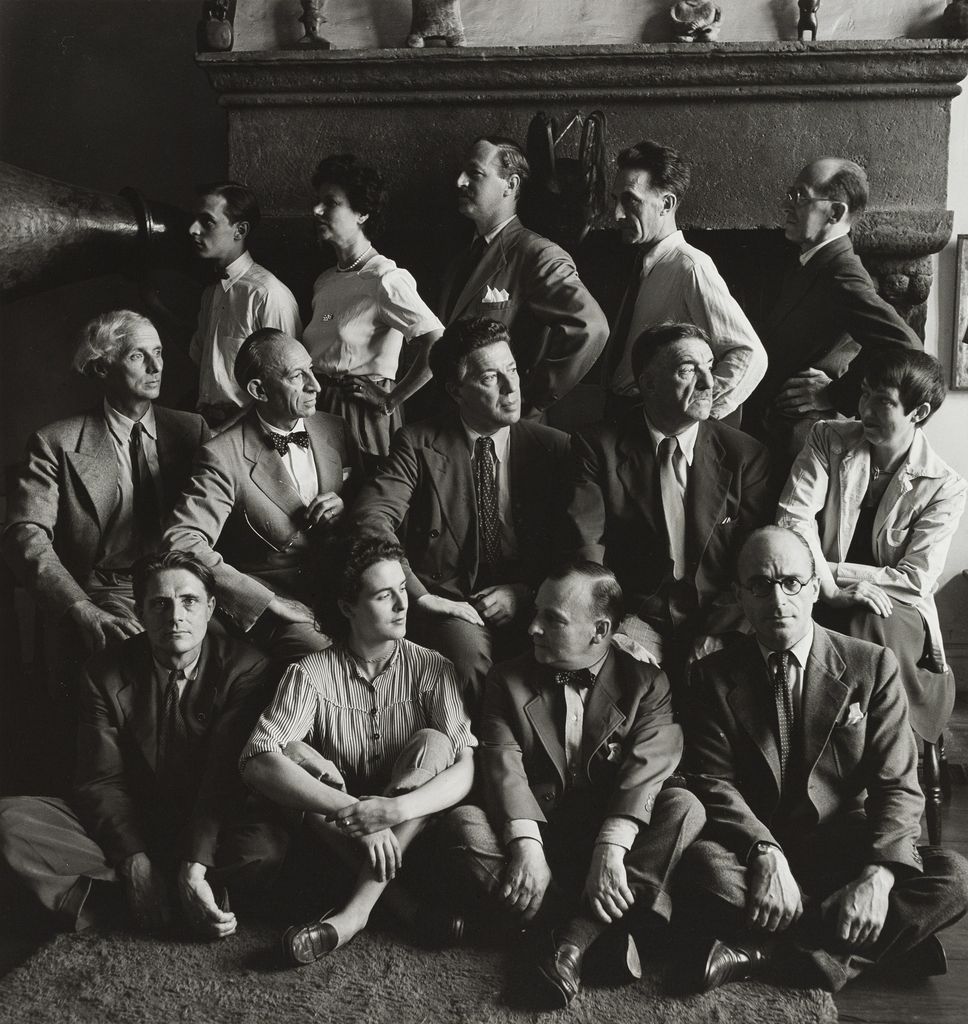
bpk Bildagentur / Münchner Stadtmuseum Munich,Germany / Hermann Landshoff / Art
Resource, NY
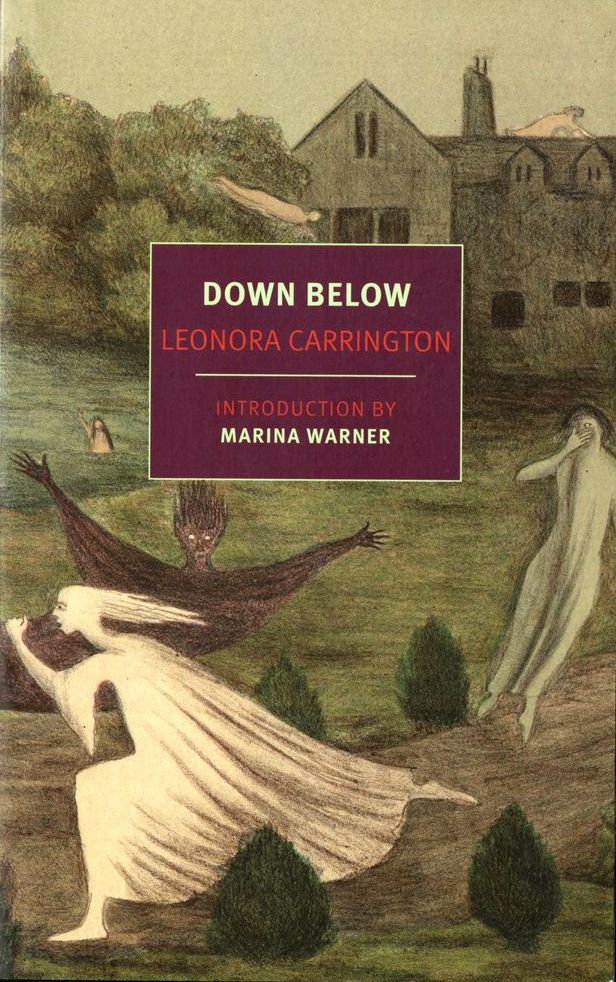
“I didn’t have time to be anyone’s muse…I was too busy rebelling against my family and learning to be an artist.”
– leonora carrington
Following World War I, Paul Éluard found himself drawn to revolutionary ideas. He crossed paths with three young French poets – André Breton, Philippe Soupault and Louis Aragon, who shared his love of the French modernist poetry and his horror of what they witnessed during the war. All became key members of the avant-garde Paris Dada Movement, then Surrealism in 1924, which Éluard helped Breton found.
Surrealism employed experimental art techniques, explored the Freudian unconscious and dreams, and was politically motivated against traditional notions of family, church and state. Éluard became one of Breton’s closest lieutenants and a key ambassador of Surrealism around Europe.
Down Below is Carrington’s memoir detailing her time in a Spanish asylum and her descent into madness. Written in a direct style, it authentically portrays insanity. Starting in 1940, when her partner Max Ernst is arrested, she flees to Spain with friends. Her mental state worsens, leading her to believe fascism is propagated through hypnosis. Confined by her father to a mental institution, she loses autonomy and battles escalating hallucinations, reflected in the memoir’s increasingly irrational narrative.
3. mexico & fantasy
Written in 1950 but first published in French in 1974, Carrinton’s The Hearing Trumpet is an eco-feminist fairytale. The surreal novel tells the story of 92-year-old narrator, Marian Leatherby. Almost deaf, Marian receives a hearing trumpet from a friend and listens in on her family’s decision to send her away to an old folk’s home. Her arrival in this institution leads to her entrapment along with other ladies under the rule of a perverted doctor. Marian’s story progresses through themes of mind-control, occultism, a Holy Grail adventure, and the forced ingestion of poisoned-fudge. In her introduction, Ali Smith calls the book, “One of the most original, joyful, satisfying and quietly visionary novels of the twentieth century.”
4. Graphic studio work, tampa, 1995/1998
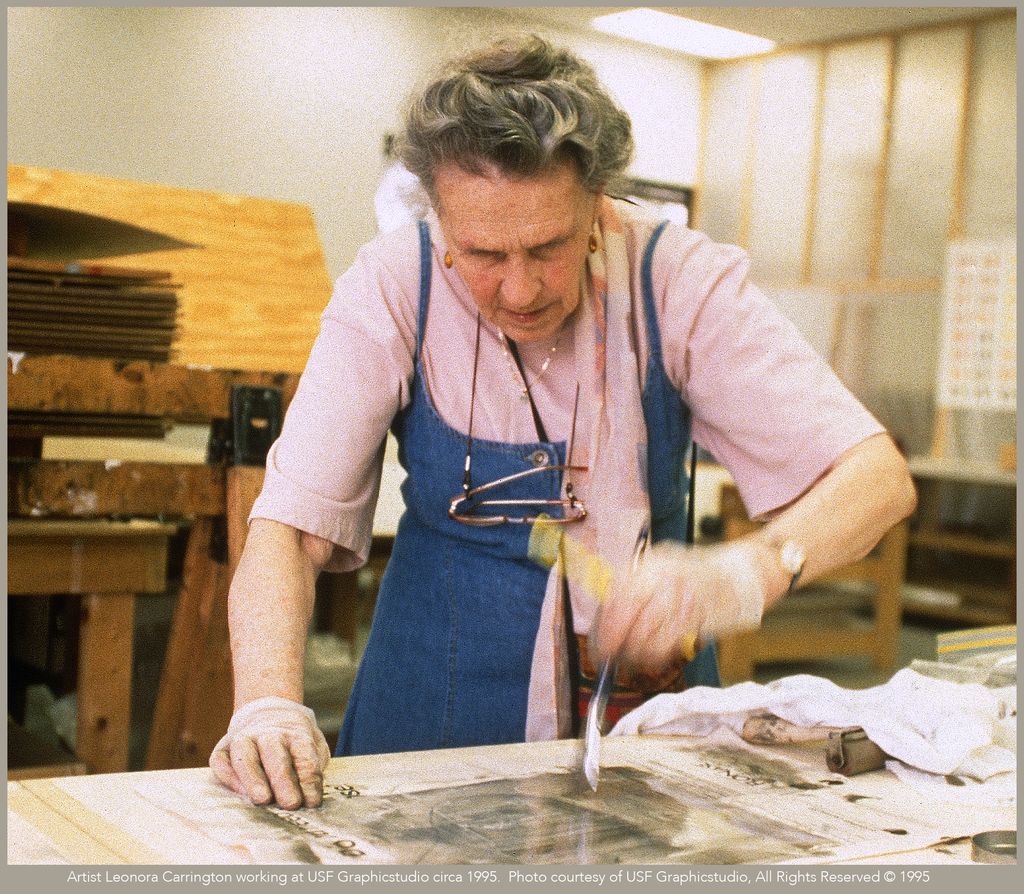
Carrington working at
USF Grapicstudio
c.1995
Photo courtesy of USF Graphicstudio,
All Rights Reserved © 1995
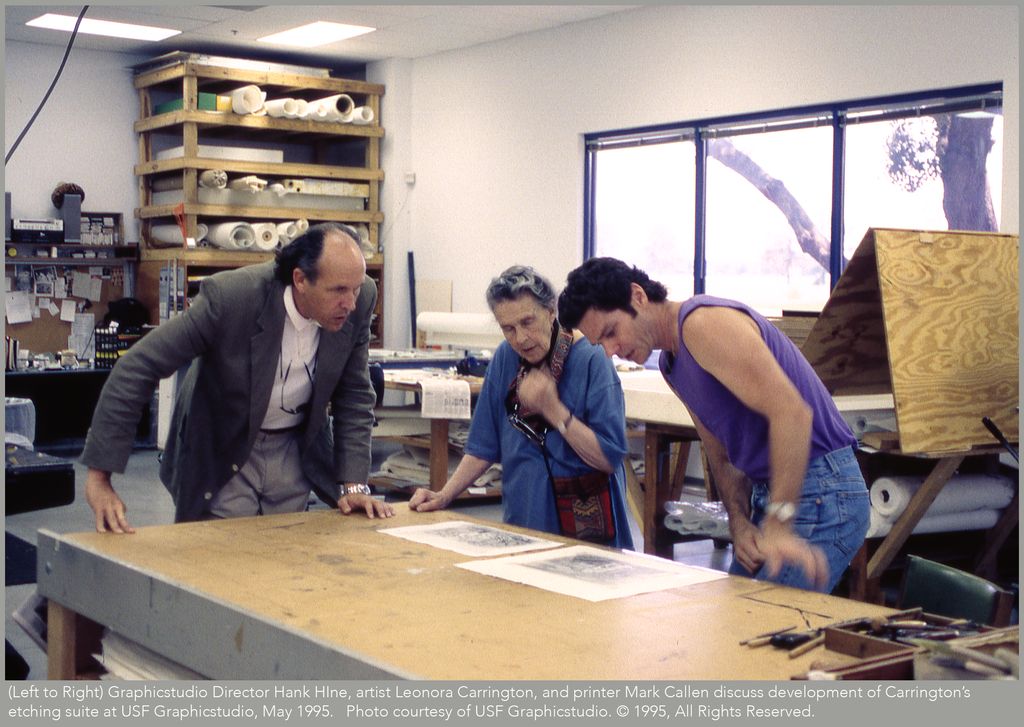
In 1995, a 78-year-old Leonora Carrington traveled to Tampa, Florida, to create a print at Graphicstudio USF. She creates The Memory Tower, a nine-color intaglio featuring a mysterious tower-like rock structure with two openings shaped like a person or creature — a site for ritual and transformation.
Three years later she returned to create a surreal bestiary. She completed an intaglio suite of magical, emblematic animals. Each print is paired with a cryptic poem by her son, the poet Gabriel Weisz Carrington. At the time, Dali Museum Director Hank Hine was the Director of Graphicstudio, and he worked alongside her during these projects. These prints are from his collection.
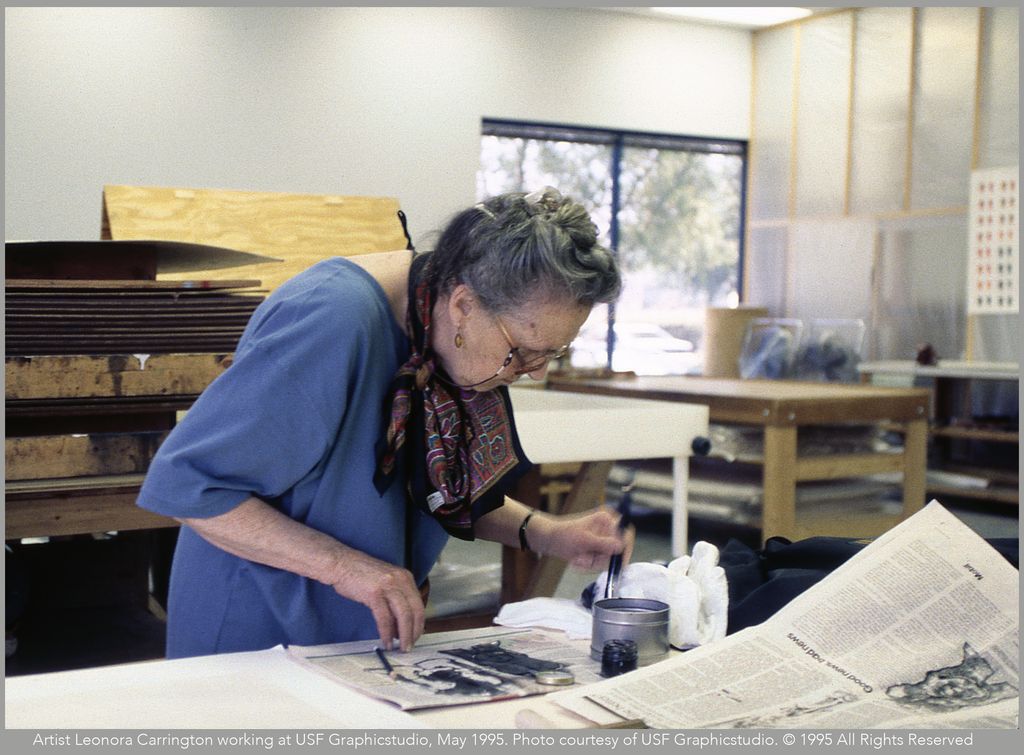
Carrington working at
USF Grapicstudio
c.1995
Photo courtesy of USF Graphicstudio,
All Rights Reserved © 1995
